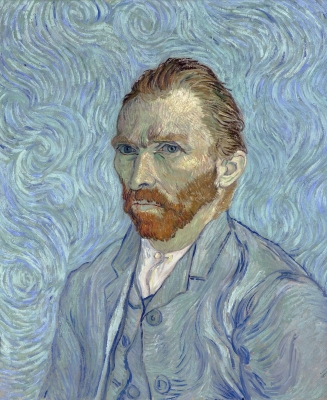
The Starry Night is an oil on canvas painting by Dutch Post-Impressionist painter Vincent van Gogh. Painted in June 1889, it depicts the view from the east-facing window of his asylum room at Saint-Rémy-de-Provence, just before sunrise, with the addition of an imaginary village.
In the aftermath of the 23 December 1888 breakdown that resulted in the self-mutilation of his left ear, Van Gogh voluntarily admitted himself to the Saint-Paul-de-Mausole lunatic asylum on 8 May 1889. Housed in a former monastery, Saint-Paul-de-Mausole catered to the wealthy and was less than half full when Van Gogh arrived, allowing him to occupy not only a second-story bedroom but also a ground-floor room for use as a painting studio.
During the year Van Gogh stayed at the asylum, the prolific output of paintings he had begun in Arles continued. During this period, he produced some of the best-known works of his career, including the Irises from May 1889, now in the J. Paul Getty Museum, and the blue self-portrait from September, 1889, in the Musée d’Orsay. The Starry Night was painted mid-June by around 18 June, the date he wrote to his brother Theo to say he had a new study of a starry sky.
In the fall of 1880, van Gogh decided to move to Brussels and become an artist. Though he had no formal art training, his brother Theo offered to support van Gogh financially.
He began taking lessons on his own, studying books like Travaux des champs by Jean-François Millet and Cours de dessin by Charles Bargue.
Van Gogh’s art helped him stay emotionally balanced. In 1885, he began work on what is considered to be his first masterpiece, “Potato Eaters.” Theo, who by this time living in Paris, believed the painting would not be well-received in the French capital, where Impressionism had become the trend.
Picture Credit : Google

